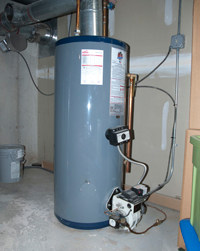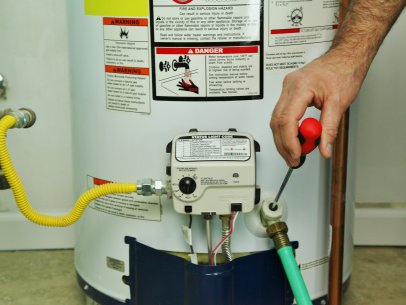Simple Ways to Care for Your Home's Hot Water System ProperlyWays to Keep Your Home's Hot Water System in Good ConditionEssential Guidance on Caring for Your Home's Hot Water System
Simple Ways to Care for Your Home's Hot Water System ProperlyWays to Keep Your Home's Hot Water System in Good ConditionEssential Guidance on Caring for Your Home's Hot Water System
Blog Article
Everybody has got their private assumption about Tips For Maintaining Your Hot Water Heater.

Warm water is essential for day-to-day comfort, whether it's for a revitalizing shower or cleaning dishes. To ensure your hot water system runs effectively and lasts longer, routine maintenance is vital. This write-up gives sensible ideas and understandings on how to keep your home's hot water system to stay clear of interruptions and costly repair work.
Intro
Preserving your home's hot water system could appear overwhelming, yet with a few straightforward actions, you can ensure it runs smoothly for years to find. This guide covers whatever from recognizing your warm water system to DIY maintenance pointers and understanding when to hire specialist assistance.
Importance of Preserving Your Warm Water System
Normal maintenance not only prolongs the lifespan of your warm water system but likewise ensures it operates effectively. Neglecting upkeep can result in reduced efficiency, greater power expenses, and even premature failure of the system.
Signs Your Hot Water System Demands Upkeep
Recognizing when your hot water system needs focus can prevent major concerns. Keep an eye out for indications such as irregular water temperature level, strange noises from the heating unit, or corroded water.
Understanding Your Hot Water System
Before diving into upkeep tasks, it's practical to recognize the standard components of your hot water system. Normally, this consists of the hot water heater itself, pipelines, anode rods, and temperature controls.
Regular Monthly Upkeep Tasks
Normal monthly checks can help capture small concerns prior to they rise.
Purging the Water Heater
Purging your water heater eliminates sediment accumulation, enhancing effectiveness and lengthening its life.
Monitoring and Replacing Anode Rods
Anode rods prevent corrosion inside the storage tank. Examining and replacing them when worn is vital.
Inspecting and Adjusting Temperature Level Setups
Readjusting the temperature level settings ensures optimal efficiency and safety.
DIY Tips for Upkeep
You can perform several upkeep jobs yourself to maintain your warm water system in leading problem.
Checking for Leaks
Routinely examine pipelines and links for leaks, as these can lead to water damages and greater bills.
Evaluating Pressure Relief Valves
Evaluating the pressure relief valve ensures it operates appropriately and avoids excessive pressure buildup.
Protecting Pipelines
Insulating warm water pipes reduces warm loss and can conserve energy.
When to Call a Specialist
While DIY upkeep is useful, some issues need professional proficiency.
Complex Concerns Needing Expert Help
Instances include significant leakages, electrical troubles, or if your water heater is regularly underperforming.
Routine Specialist Upkeep Perks
Specialist upkeep can include extensive inspections, tune-ups, and making certain compliance with safety criteria.
Final thought
Routine upkeep of your home's warm water system is necessary for effectiveness, longevity, and expense financial savings. By complying with these suggestions and knowing when to look for expert aid, you can guarantee a reliable supply of hot water without unexpected interruptions.
Water Heater Maintenance: The Basics
Maintaining your water heater will ensure it operates efficiently and has a longer lifespan. Neglecting regular maintenance can lead to costly repairs and an even bigger chunk of your savings if you have to replace it sooner than necessary. But there’s good news: Most water heater maintenance tasks are relatively simple and easy for homeowners with basic DIY skills.
Flush the Water Heater
Over time, sediment and minerals can build up in the tank, reducing its efficiency and potentially causing damage. To flush the tank, turn off the power or gas supply, attach a hose to the drain valve near the bottom and open the valve to drain the water until it runs clear. Ideally, flush the tank annually.
Replace the Anode Rod
The anode rod is a sacrificial metal rod that helps prevent corrosion inside the tank. Inspect and replace it every three to five years or per the manufacturer's recommendation. To replace the anode rod, turn off the power or gas supply, drain a few gallons of water from the tank, unscrew the old rod and replace it with a new one. If the anode rod is significantly corroded or covered in calcium buildup, it's a sign the water heater may need to be replaced soon.
Tune-Up
A yearly tune-up can help identify potential issues and ensure your water heater operates at peak efficiency. This typically involves checking the thermostat, burner assembly (for gas heaters) and any other components specified by the manufacturer. During a tune-up, the technician may also clean the burner and adjust the pilot light (for gas heaters) or examine the heating elements (for electric heaters).
How to Maintain Your Water Heater
Insulate the tank. Insulating the tank can improve energy efficiency and reduce heat loss, saving you money on energy bills. You can purchase precut insulation blankets designed specifically for water heaters or use standard fiberglass insulation wrapped securely around the tank. Check the temperature. The recommended water temperature for most households is around 120 degrees Fahrenheit (49 degrees Celsius). Higher temperatures can increase energy costs and potentially cause scalding. Use a kitchen thermometer to check the temperature at the faucet nearest the water heater. Monitor water pressure. Excessive water pressure can strain the water heater and cause leaks or even tank failure. Install a pressure-reducing valve if necessary. The ideal water pressure range is between 60 and 70 PSI (pounds per square inch). Test the temperature and pressure (T&P) relief valve. The T&P relief valve is a safety feature that releases pressure if the tank gets too hot or the pressure builds up too high. Test it annually by lifting the lever and allowing a small amount of water to release. Replace the valve if it doesn't release water or reseal properly. Check for leaks. Regularly inspect the tank, pipes and fittings for leaks or corrosion. Deal with issues promptly to prevent further damage. Even a small leak can lead to significant water damage over time. Consider a tankless water heater. If your traditional tank-style water heater is nearing the end of its lifespan ( typically 10 years), consider replacing it with a tankless water heater. These units heat water on demand, reducing standby energy losses and potentially saving you money on your energy bills. Schedule professional maintenance. While homeowners can perform many water heater maintenance tasks, it's still a good idea to schedule professional maintenance every few years. A plumber or HVAC technician can thoroughly inspect the unit, identify potential issues and ensure it operates safely and efficiently. https://www.homeserve.com/en-us/blog/home-improvement/hot-water-heater-maintanence/

We were guided to that article on How to Maintain Your Water Heater & Prolong its Life through a buddy on another web blog. Enjoyed our posting? Please quickly share it. Let other people discover it. Many thanks for taking the time to read it.
Click Here Report this page